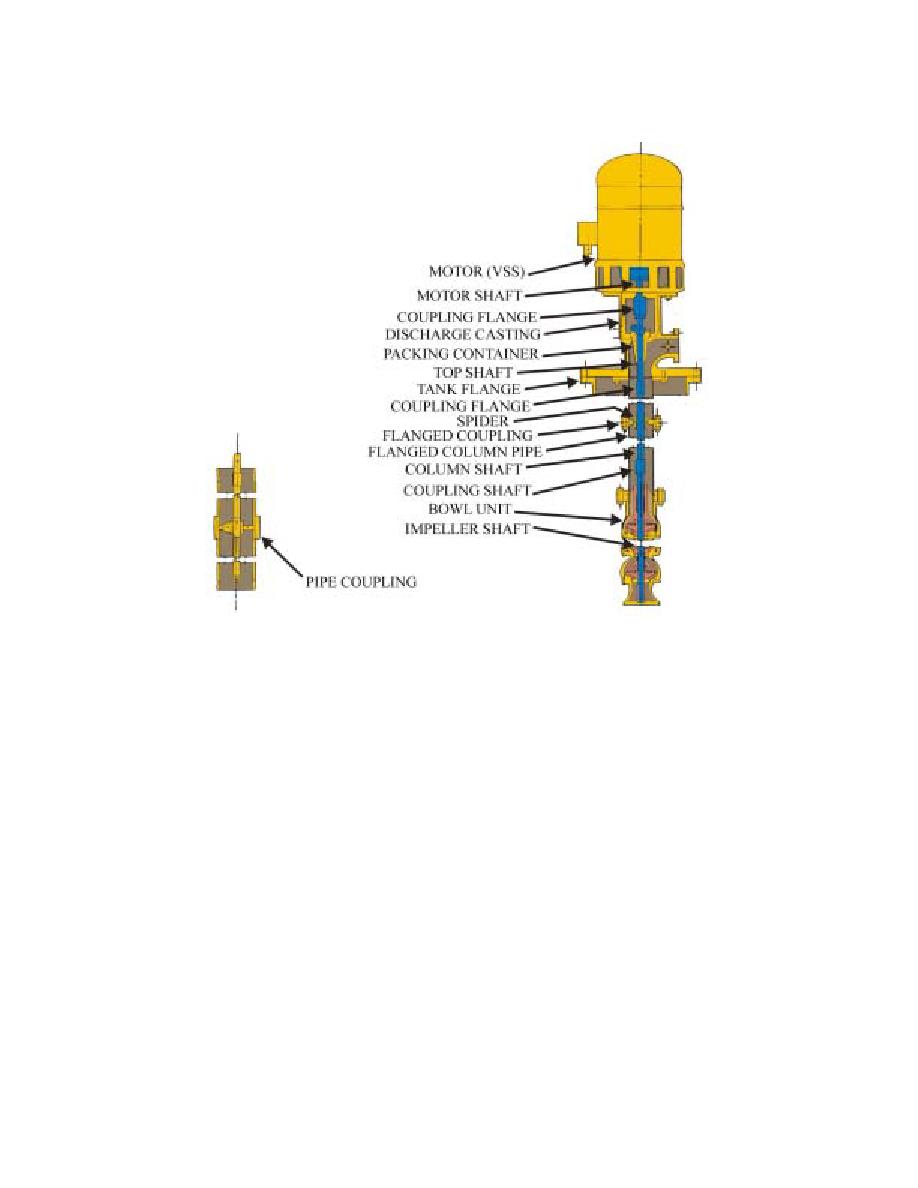
UFC 3-460-03
21 JANUARY 2003
Figure 3.3. Vertical Deepwell Turbine Pump.
3.2.3. For new pump installations, use API Std 610, Centrifugal Pumps for Petroleum, Heavy Duty
Chemical, and Gas Industry Service, centrifugal pumps and vertical turbine pumps. Contact your
MAJCOM fuels engineer for additional information as there are many types and configurations of
API Std 610 pumps. Figures 3.2 and 3.3 show two types of pumps used as transfer pumps.
3.2.4. A hydraulic gradient (Figure 3.4) is usually used in the design of a pumping and piping system
to help in properly sizing lines and selecting pumps to deliver a given amount of fuel in a certain
time. An example of a hydraulic gradient for a given system is shown in Figure 3.4. In this sample,
fuel is pumped from an aboveground storage tank to two truck fill stands simultaneously, at the rate
of 946 liters per minute (250 gallons per minute) to each. The centerline of the tank outlet is
0.91 meter (3 feet) above the eye of the pump. Minimum desirable elevation of the liquid is taken as
the line friction loss of 4.22 meters (13.84 feet) to the elevation of the pump, or 2.13 meters (7 feet).
The pump raises the head to 18.29 meters (60 feet). The friction loss in the 102-millimeter line to the
connection to the two fill stands drops the elevation to 14.31 meters (46.98 feet). The drop at
946 liters per minute (250 gallons per minute) in each piping system to the truck fill stands drops the
elevation to 12.16 meters (39.9 feet). The elevation of the truck fill stand is 7.01 meters (23 feet).
The difference in head (12.16 meters 7.01 meters = 5.15 meters [16.9 feet]) is the head available
for delivering fuel.
19


 Previous Page
Previous Page
